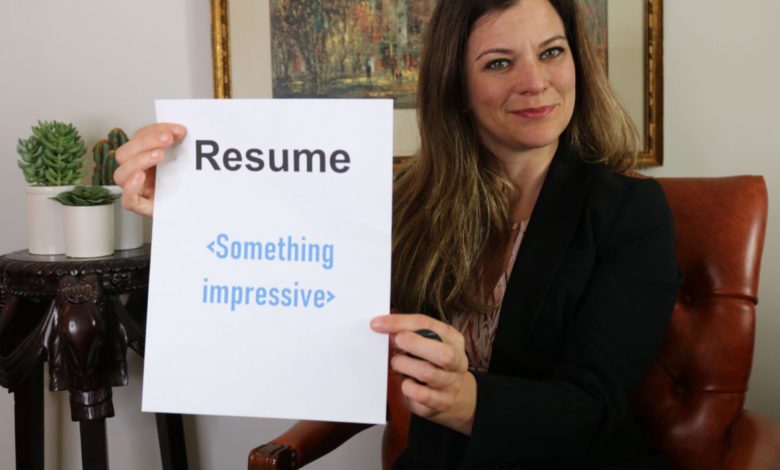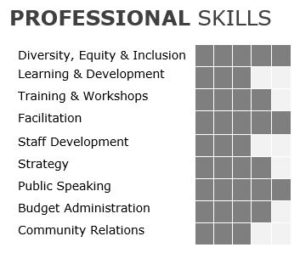
Ellie Petro is a consultant with Centric Consulting specializing in Adoption & Organizational Change Management, with a keen interest in the people side of change. She also runs résumé workshops and job hunt coaching services, helping everyone from recent grads to exec-level job seekers.
Are you the type of person who lovingly crafts the perfect résumé? Or does the phrase “update your résumé” fill you with dread? Unfortunately, regardless of our feelings on the matter, many of us are needing to do just that. The changes brought about by the COVID-19 pandemic are wide-reaching and one of them is many people’s employment status. With so many highly qualified workers on the hunt, it is vital your résumé reflects the value you can uniquely bring to your next potential employer.
The tips below can help you to put your best foot forward, highlighting those qualities that will bring your résumé to the top of the pile.
-
Skip the cover letters
In general, don’t waste your time writing cover letters unless one is stipulated in the posting. Everything in a cover letter should be discussed and explained in an interview. Additionally, your personal statement can act as a shortened, de facto cover letter. That being said…
-
List it or leave it out: location
Traditional résumés include location in their work history and contact info. However, in our new remote world, that may not be necessary, and you could be removing yourself from consideration before you even really get a foot in the door. With so many roles and companies migrating to remote workspaces, we are no longer restricted by geography for jobs. Leave out the location if you’re applying somewhere outside your city or state.
-
Draft a personal statement
This is just two to four sentences about you. This would be where you include your strongest soft (aka essential) skills and something the résumé won’t tell the Hiring Manager. Examples of this would be an appreciation for intersectional department collaboration or being a team player with a sense of humor.
-
Include format AND content
It may be helpful to download a format that helps frame your information and makes great use of the extra white space on the page. How your resume looks will make them stop to read it, but what it says will be what keeps them reading. Both the format and the content need to be up to snuff. If your résumé is all sizzle and no steak, you’ll be selling yourself short. So when it comes to content, stay on point. List those relevant skills and plug your assets, but also remember it is not just what you say but how you say it.
-
Choose your words carefully
Which sounds better: “checked customers out at the register” or “managed company funds”? What about “oversaw productivity for 10 employees” versus “motivated a team of 10 employees to exceed productivity goals”? Companies are mainly interested in what value you will bring to a role and their business. Structure your syntax with that in mind. Read aloud what you type. Or, better yet, have someone else read it out loud to you. This will enable you to hear what your résumé is really saying about you.
-
 Decide on graphics
Decide on graphics
Be aware that any graphic you include will be the first thing a recruiter looks at. If you’re skilled at creating these graphics, go ahead and include one. If you aren’t as confident about creating one, it’s best to leave it out. Make sure the graphic is relevant and not being included for the sake of being included – every centimeter of your résumé should be well thought-out and serve a purpose that benefits you.
-
Pick bullet points or paragraph format
Once you choose your format, stay consistent through both work and education history. If you use bullet points, don’t put periods at the end of your statements. If you’re finding yourself needing to include more than one statement per bullet point, perhaps using full sentences in a paragraph is a better route.
-
Proofread… and then do it again
If your content is riddled with grammatical errors, confusing statements, or exaggerations, you’ll stand out again – but for all the wrong reasons. Also, consistency is key. Things like Oxford commas, ampersands, and abbreviations are up to your discretion, but they need to be consistently used. It can be worthwhile to have another person review your résumé. Sometimes we read what we meant to say instead of the words on the page, and therefore, we miss our own errors. Fresh eyes help.
-
Tailor your résumé
It is no secret that recruitment has turned into a numbers game. The more applications you submit, the more likely you are to get a job. This has led to the misconception that your résumé needs to be adapted to every posting. In reality, you need one résumé for each industry you are applying in, and from there you use your discretion when deciding if a job posting warrants any specific changes. For example, if you’re applying to roles in Data and Analytics, Higher Education, and Business Administration, you should have three different versions of your résumé, so that each one highlights your skills and passion for the appropriate industry.
-
Find the right kind of help
If you decide to seek out professional résumé services, make sure they workshop the document with you. Résumé services that redo your résumé without any input from you are cause for concern. You bear the responsibility for what is on your résumé. If your updated document does not sound or feel like you at all, you’ll be portraying yourself disingenuously. Imagine you have been asked to write a résumé for a famous actor. You can easily do some quick online searches and write down a list of all their acting credits. However, without their input, how will you know what strategies or approaches they used to bring that character to life? The same applies to your résumé; you need to own it, and the impression it makes to recruiters and hiring managers.
Job searching is rarely fun and usually stressful, and way too often it seems endless. Don’t be afraid to ask for help when you need it, and never take rejection personally. The only way out is through. So just remember there will come a day when you are offered that job and can tuck your résumé back into the desk drawer. (Just make sure to keep it updated with your amazing new job!)
Jacquelyn Adams, an IEEE Senior member, is a nationally-recognized leader in employee learning and development. Find more of her Lessons on Leadership columns here or connect with her on LinkedIn here.
Ellie Petro is a consultant with Centric Consulting specializing in Adoption & Organizational Change Management, with a keen interest in the people side of change. She also runs résumé workshops and job hunt coaching services, helping everyone from recent grads to exec-level job seekers.






